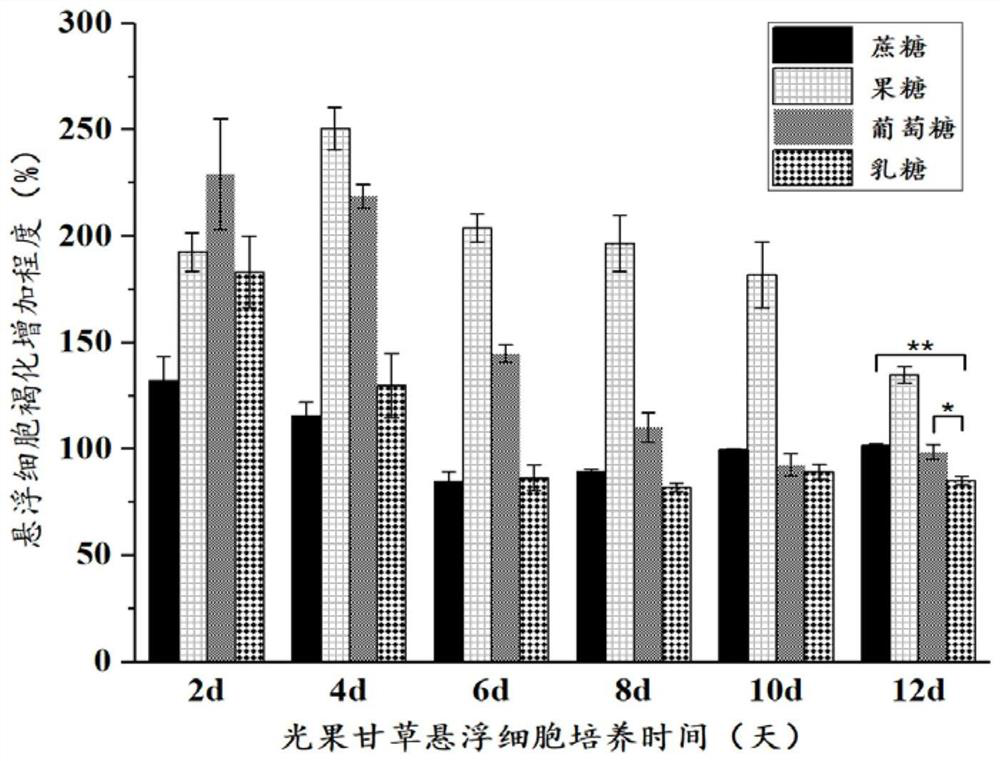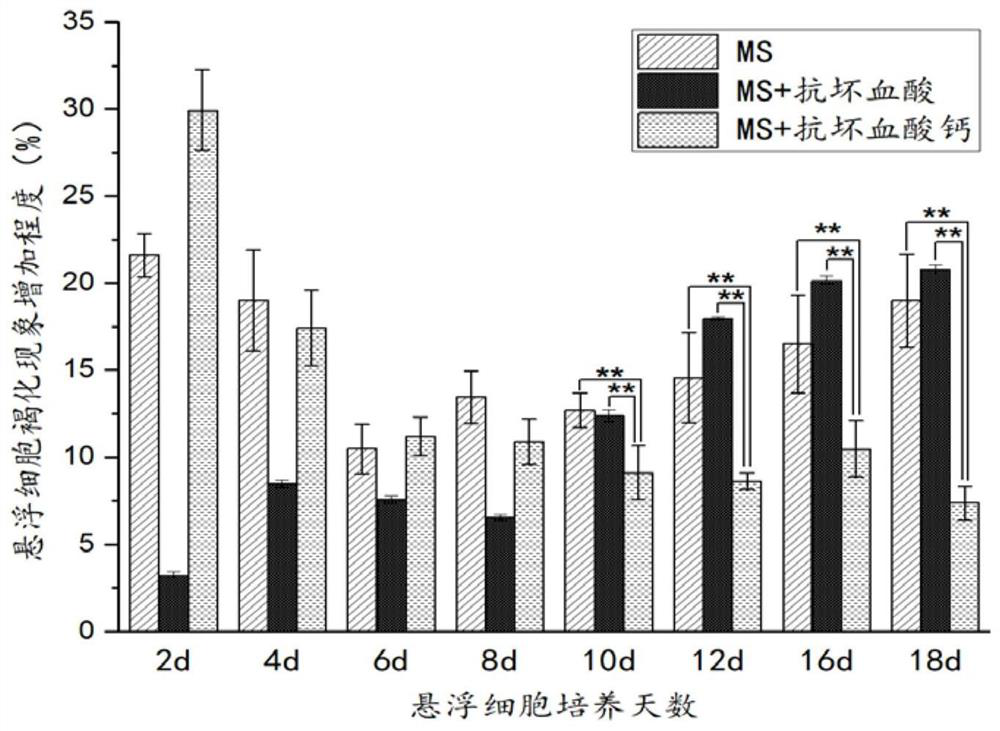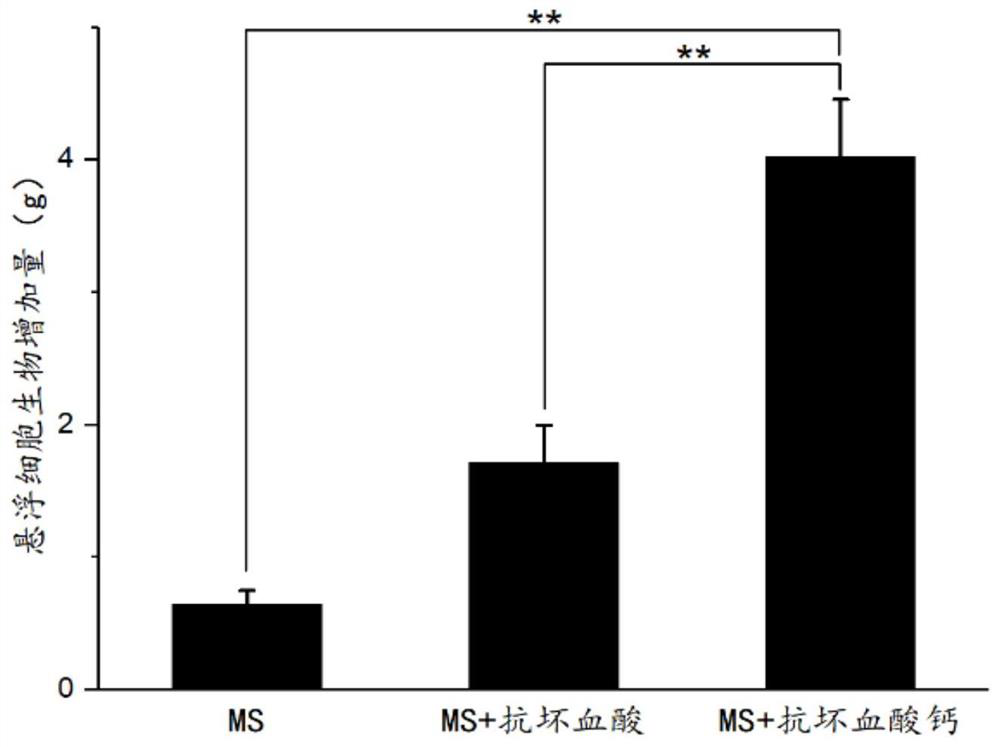A long-term method for inhibiting the browning phenomenon of Glycyrrhizae glabra suspension cell culture
A technology of licorice glabra and suspension cells, which is applied in the field of cell culture, can solve the problems of insignificant accumulation change, increase pollution rate, increase workload, etc., and achieve the effect of increased cell biomass accumulation, good growth state, and good effect
- Summary
- Abstract
- Description
- Claims
- Application Information
AI Technical Summary
Problems solved by technology
Method used
Image
Examples
Embodiment 1
[0028] Example 1 Establishment of a long-term method for inhibiting the browning of Glycyrrhiza glabra suspension cell culture
[0029] 1. Obtaining Glycyrrhiza glabra seed cells
[0030] The callus cells of Glycyrrhizae glabra callus in good growth state were selected as the seed cells of suspension culture by continuous subculture on solid medium;
[0031] The solid medium is MS (Murashige-Skoog) medium, that is, based on MS medium, the following mass volume concentration (final concentration) is added: 0.5mg / L 2,4-dichlorophenoxyacetic acid (2,4 -D), 0.5mg / L 6-benzylaminoadenine (6-BA), 0.5mg / L naphthaleneacetic acid (NAA), 30g / L sucrose, 4g / L gellan gum, 1g / L PVP (4000) and 0.5g / L acid hydrolyzed casein, adjust the pH to 5.8-6.0 with HCl and KOH.
[0032] Each substance comprising the following final concentrations in the MS medium: 1.65g / L NH 4 NO 3 , 1.90g / L KNO 3 , 0.17g / L KH 2 PO 4 , 0.1807g / L MgSO 4 ·7H 2 O, 0.332g / L CaCl 2 , 22.3mg / L MnSO 4 4H 2 O, 6.20 m...
PUM
 Login to View More
Login to View More Abstract
Description
Claims
Application Information
 Login to View More
Login to View More - R&D
- Intellectual Property
- Life Sciences
- Materials
- Tech Scout
- Unparalleled Data Quality
- Higher Quality Content
- 60% Fewer Hallucinations
Browse by: Latest US Patents, China's latest patents, Technical Efficacy Thesaurus, Application Domain, Technology Topic, Popular Technical Reports.
© 2025 PatSnap. All rights reserved.Legal|Privacy policy|Modern Slavery Act Transparency Statement|Sitemap|About US| Contact US: help@patsnap.com



